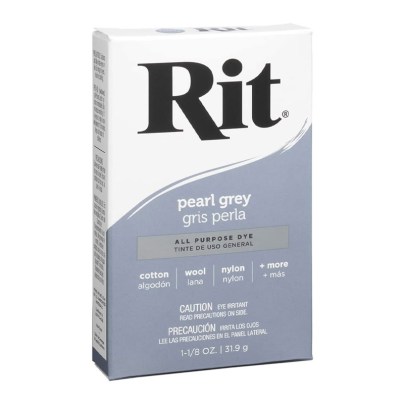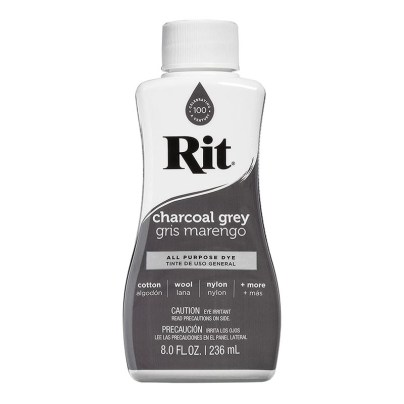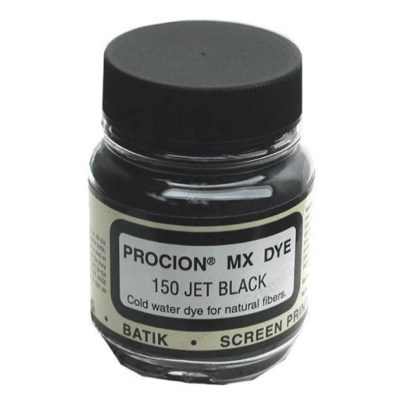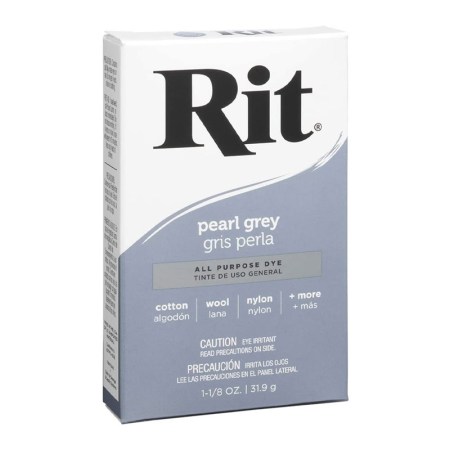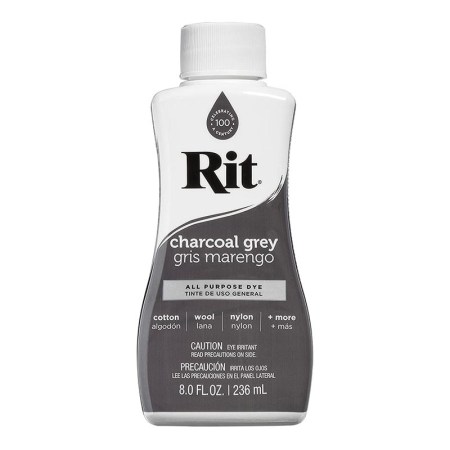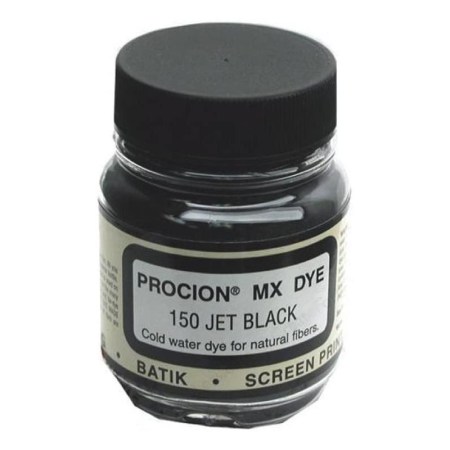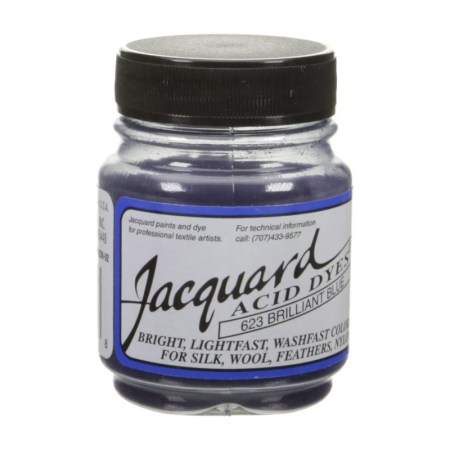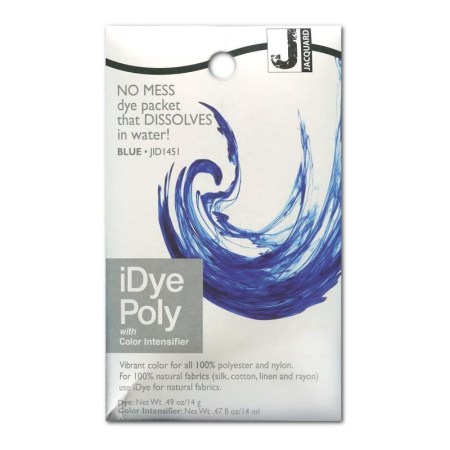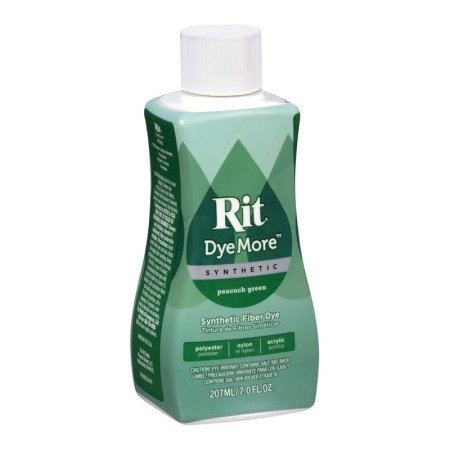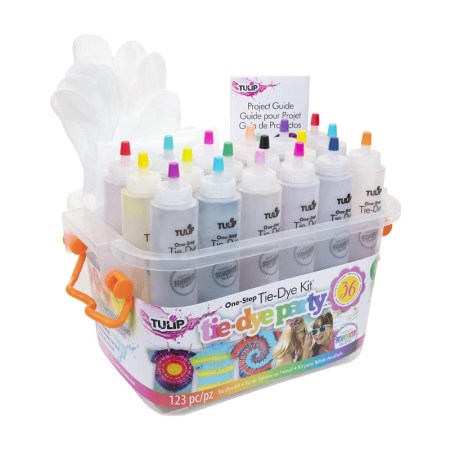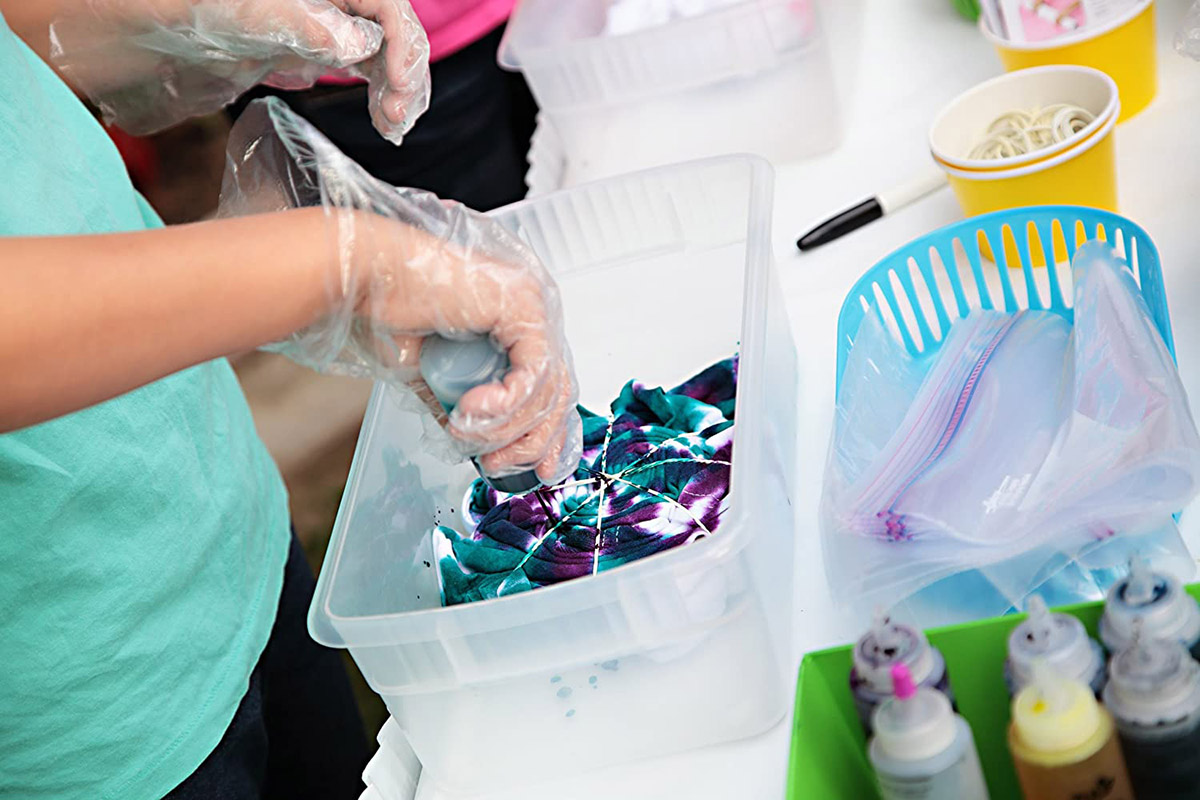
We may earn revenue from the products available on this page and participate in affiliate programs. Learn More ›
DIYers who engage in fabric crafts, sewing, quilting, costume-making, and fashion design use fabric dyes to achieve dramatic and colorful effects in their artistic creations. In addition, fabric dyes can be used to revitalize faded clothing, shoes, accessories, draperies, and throw rugs.
Creative dyeing techniques include dipping, ombré effects, batik, shibori, and tie-dyeing for more artistic projects. Ahead, explore several important factors to consider when choosing the best fabric dye for your next DIY project, and then discover some of the top-rated options on the market today.
- BEST OVERALL: Rit All-Purpose Powder Dye
- BEST BANG FOR THE BUCK: Rit All-Purpose Liquid Dye
- BEST FOR COTTON AND LINEN: Jacquard Procion MX Fiber Reactive Dye
- BEST FOR SILK AND WOOL: Jacquard Acid Dyes 1/2 Ounce
- BEST FOR SYNTHETIC FABRICS: Jacquard Products Synthetic, iDye Fabric Dye
- BEST FOR BLENDED FABRICS: Rit DyeMore Liquid Dye
- BEST FOR TIE-DYE PROJECTS: Tulip One-Step Tie-Dye Kit
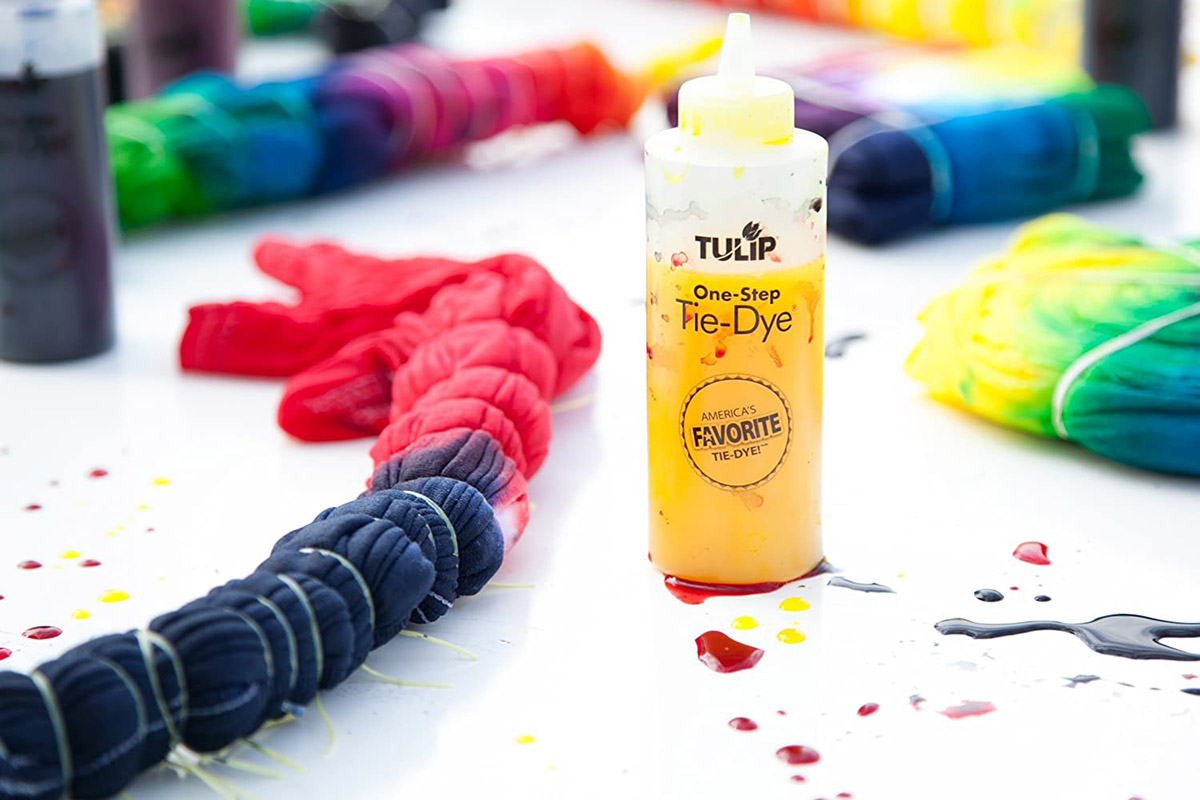
What to Consider When Choosing the Best Fabric Dye
Although it may seem that shopping for the best fabric dye requires a degree in chemistry, the selection process is not that difficult. Manufacturers formulate different types of fabric dyes to react with the fibers found in different types of fabrics. Additionally, users may employ a variety of dyeing techniques to achieve desired color effects and patterns. Naturally, personal and environmental safety are always important factors. Read on to learn the primary considerations for choosing the ideal fabric dye for the DIY project at hand.
Type
As mentioned above, different types of fabric dyes are formulated to suit different types of fabric. Fabric dyes contain varied chemical ingredients that make them effective for achieving permanent coloration on a host of fabrics.
- Fiber-reactive dyes form molecular bonds with the cellulose fibers that derive from plant sources. These fibers are found in fabrics like cotton, linen, hemp, Tencel, and rayon.
- Acid dyes work in acidic dye baths, and they react with the protein fibers found in silk, wool, cashmere, feathers, and nylon.
- Union dyes result in uniform coloration for a blended fabric that contains two different types of fibers. In a single dye bath, two distinct classes of dye in the same color are employed to achieve consistent coloration throughout a blended fabric.
- Direct dyes are considered one of the basic dyes to use on fabrics. They refer to any class of dye that dissolves in water to be taken up directly by the fibers of the submerged fabric. Most fabric dyes for home use are direct dyes.
Liquid vs. Powder
Both liquid and powder fabric dyes yield vibrant and permanent coloration. There is no difference in the final results of dyeing fabric with either powder or liquid dyes.
Liquid dye is more concentrated than powder dye, making it necessary to use only half as much liquid. In other words, one bottle of liquid dye is equal to two packages of powder dye. For this reason, liquid dye may be a more economical choice.
DIYers must dissolve powder dye in hot water before adding it to the dye bath. Alternatively, liquid dye is premixed, eliminating the dissolving step. Users might prefer the convenience afforded by liquid dye.
Fabric
Manufacturers offer different classes of fabric dyes to color different types of fabric. The reason for the differentiation is that specific dye formulas react with the specific fibers found in various fabrics. Here is a list of common fabrics along with recommendations for the most effective types of fabric dye:
- Cotton, hemp, linen, Tencel, Modal, bamboo, and rayon fabrics contain cellulose fibers from natural plant sources. These fabrics react well to basic dyes and fiber-reactive dyes that bond molecularly with the cellulose fibers.
- Wool, silk, cashmere, alpaca, and feathers contain natural protein fibers. These fabrics and materials react well to acid dyes.
- Polyester, acrylic, acetate, spandex, and nylon are synthetic fabrics containing fibers that do not occur in nature. Look for fabric dyes that advertise special chemical formulations for coloring synthetic fabrics.
Dyeing Method
Artists and crafters utilize a variety of fabric-dyeing methods to achieve interesting and attractive color results. Here’s an overview of fabric-dyeing techniques:
- Tie-dye is a hand-dye method in which users gather small sections of fabric and tie them tightly with string or rubber bands. The dye is applied directly to the fabric, and the tied-off sections do not absorb the dye.
- Dye painting is a process in which artists apply a thickened, fiber-reactive dye solution directly to the fabric, as in a painting.
- Batik is a fabric-dyeing process in which artists first paint on the fabric with melted wax. They then dye the fabric, and the areas covered in wax do not absorb the color. With repetition and layering, batik artists achieve multicolored effects.
- Tub dyeing, also called vat dyeing, involves soaking the fabric in a dye wash. The process results in overall color as the submerged fabric absorbs the dye.
- Heather effects result from cross-dyeing blended fabrics with two or more different dyes. For example, the two types of fibers in a wool and cotton blended fabric will react to the two different dyes, resulting in a heather effect.
- Shibori is a Japanese fabric-dyeing technique that involves twisting, folding, and binding fabric before dyeing it with indigo.
Safety and Environmental Impact
The commercially available fabric dyes on the market are safe and nontoxic when used as instructed. However, it’s essential to keep fabric dyes out of reach of small children who might swallow them. Some types of fabric dyes can cause allergic reactions in users, but adverse reactions are typically seen in textile workers exposed to the dyes on a daily basis, not occasional home users.
Approximately 10 to 15 percent of fabric dye does not adhere to the fabric during the dyeing process and is consequently rinsed away. Environmentalists study this disposal of fabric dyes into wastewater systems. A heavy buildup of dyes can affect light reflection and absorption in bodies of water, causing detrimental effects on algae.
While these studies involve large operations in the textile industry, the type of fabric-dyeing performed by crafters and artists at their craft corners exerts little impact. Environmentally conscious users may look for fabric dyes that advertise safety for wastewater systems.
Our Top Picks
Offering a broad spectrum of appropriate dyes for numerous fabric types, this list of top picks features all-purpose, fiber-reactive, and acid dyes. Dyes formulated for synthetic and blended fabrics, as well as for the popular tie-dyeing technique, are also included. Peruse the following recommendations to discover some of the most reliable fabric dyeing products from reputable manufacturers.
Best Overall
Rit All-Purpose Powder Dye
Revive faded clothing and accessories or rejuvenate worn draperies and throw rugs for the home with this powder fabric dye from Rit. Alternatively, DIYers can use this dye to make dynamic color changes and artistic patterns in a variety of fabrics. It works on natural, synthetic, and acrylic fibers and blends.
One 1.44-ounce box of this powdered Rit dye is enough to color 1 pound of fabric—equivalent to 3 yards of medium-weight fabric. Use the sink or tub-dyeing method for a convenient experience, or use the stovetop method to achieve optimally vibrant colors. The washing machine method works well for large dyeing jobs. Add a cup of salt to the dye bath for enhanced color or a teaspoon of liquid dish detergent to promote level dyeing.
For labeling the ingredients in its powder dye, Rit conforms to Standard D4236 from ASTM International (formerly known as the American Society for Testing and Materials). Choose from 16 color options, ranging from black, brown, and navy blue to scarlet, kelly green, and lemon yellow.
Product Specs
- Type: Direct dye
- Form: Powder
- Suitable Fabrics: Natural fibers, synthetics, and acrylic blends
- Dyeing Method: Tub dyeing
Pros
- Colors 1 pound of fabric
- Easy to use
- Suitable for a variety of fabrics
- 16 colorways
- Affordable
Cons
- Some users report ineffectual use
- Fewer colors than comparable products
Get the Rit Powder dye at Amazon, Sears, and Walmart.
Best Bang for the Buck
Rit All-Purpose Liquid Dye
This all-purpose liquid dye from Rit is formulated to add intense color to natural fabrics, including cotton, wool, silk, linen, ramie, rayon, and nylon. The economical 8-ounce container yields enough liquid dye to color 2 pounds of fabric. It can even produce color results on wood, wicker, paper, and cork.
For general dye projects, users can add the formula to water in a sink or a bucket. For nylon or more vibrant color results, the stovetop method is preferred. Alternatively, this dye works well in a washing machine for overall color in large items. The Rit website offers 1,000 recipes for combining dyes to achieve specific shades and desired hues.
This all-purpose liquid dye is non-toxic and safe for sewer and septic systems. It’s a vegan product, and no animals are harmed in the research or manufacturing processes. Select from 33 color options in a rainbow of unique hues, from coral to eggplant to tangerine.
Product Specs
- Type: Direct dye
- Form: Liquid
- Suitable Fabrics: Natural fabrics
- Dyeing Method: Tub dyeing
Pros
- Colors 2 pounds of fabric
- Non-toxic and safe for sewer and septic systems
- Works on wood, wicker, paper, and cork
- Vegan and cruelty-free
- 33 color options
Cons
- Some users report inconsistent results
Get the Rit Liquid dye at Amazon, Target, and Walmart.
Best for Cotton and Linen
Jacquard Procion MX Fiber Reactive Dye
Cellulose fabrics, such as linen, cotton, hemp, rayon, and Tencel, contain fibers made from plants. Fiber-reactive dyes form molecular bonds with these fibers to produce vivid, colorfast, and long-lasting hues. This fiber-reactive dye from Jacquard works well with cellulose fibers, and DIYers can also use it for dyeing wool and nylon.
Create a cold water dye bath with this concentrated powder dye to achieve permanent results that stand up to machine washing. The bottle contains 0.66 ounces of dye to color more than 1 pound of fabric. For lighter shades, use less dye, or increase the dye amount for deep, rich, or bright coloration. This dye is available in a rainbow of 34 inspiring colors, from bubble gum to robin egg blue to marine violet.
This Procion MX dye is a go-to favorite for crafters, artists, quilters, and fashionistas. It works well for traditional vat dyeing as well as tie-dye, batik, airbrush, screen-printing, and dye-painting processes.
Product Specs
- Type: Fiber-reactive
- Form: Liquid
- Suitable Fabrics: Cellulose fibers
- Dyeing Method: Vat dyeing, tie-dye, batik, airbrush, screen-printing, and dye-painting
Pros
- Dyes 1 pound of fabric
- Suitable for crafting and re-dyeing clothing
- Multiple dyeing methods
- 34 colorways
Cons
- Some users report poor color vibrancy
Get the Jacquard fiber-reactive dye at Amazon, Sears, and Walmart.
Best for Silk and Wool
Jacquard Acid Dyes 1/2 Ounce
Don’t be nervous because the word “acid” appears in the name of this dye. The only acid applied in the process is the white vinegar or citrus acid that users add to the dye bath for vibrant, colorfast shades that won’t fade or run.
Jacquard acid dye is formulated to work on protein fibers such as wool, silk, cashmere, alpaca, and feathers. It’s a concentrated powder that dissolves in hot water. Each 0.5-ounce bottle colors up to 2 pounds of protein-fiber materials. Add more powder for deep, rich coloration, or go light on the powder for soft pastel hues.
Some of the most vivid, pure, and brilliant fabric colors possible emerge from the acid dyeing process. Choose from 29 Jacquard acid dyes—from crimson to emerald to sapphire blue—for vat-dyeing, fabric painting, and printing.
Product Specs
- Type: Acid dye
- Form: Powder
- Suitable Fabrics: Protein fibered fabrics
- Dyeing Method: Vat dyeing, fabric painting, and printing
Pros
- Dyes 2 pounds of fabrics
- 29 colorways
- Provides light or vibrant hues
Cons
- Some nylon fabrics may not take the dye correctly
Get the Jacquard acid dye at Walmart and Sears.
Best for Synthetic Fabrics
Jacquard Products Synthetic, iDye Fabric Dye
This synthetic fabric dye is the ideal choice for coloring polyester and nylon fabrics, but its uses go beyond dyeing fabric apparel and accessories. Aside from polyester and nylon fabrics, it works on numerous synthetic materials, including urethane coatings, plastics, acrylics, 3D-printed objects, plastic toys, dolls, wigs, and more.
Jacquard iDye simplifies the dyeing process via convenient dissolvable liquid packets. Users simply drop the packets into a pot of water on the stove with no measuring or pouring. After adding the fabric, bring the water to a boil to produce rich, permanent color.
Some fabrics feature synthetic polyester fiber blended with a natural fiber, such as cotton. For these fabrics, users may achieve satisfactory color results by applying both iDye Natural and iDye Poly in the same color at the same time. Alternatively, use the natural and poly versions of iDye in different complementary colors for a two-tone result. Select from 12 vibrant colors, from red and pink to turquoise and blue.
Product Specs
- Type: Direct dye
- Form: Powder
- Suitable Fabrics: Synthetic fabrics
- Dyeing Method: Tub or vat dyeing
Pros
- Safe to use on multiple surfaces
- Easy-to-use packets
- Natural and poly versions available
- 12 colors offered
Cons
- Comes in fewer colorways compared to similar products
Get the Jacquard iDye fabric dye at Amazon, Sears, and Walmart.
Best for Blended Fabrics
Rit DyeMore Liquid Dye
Fabric blends are created when two different fibers are blended in one fabric. This is a common practice to enhance the drape, feel, performance, and durability of fabric. Many garments, accessories, and other fabric items feature both natural and synthetic fibers in their weave. Cotton-polyester blends and cotton-spandex blends are two examples of fabrics that offer the advantages of both natural and synthetic fibers.
Rit offers this 7-ounce bottle of liquid dye for coloring synthetic fabrics, including polyester, acrylic, acetate, and nylon. Additionally, it works well for any fabric with 35 percent or more synthetic fibers blended with natural fibers. For fabric blends with less than 35 percent synthetic fibers, Rit recommends its all-purpose dye.
Rit’s website offers more than 250 recipes for achieving luscious shades with DyeMore liquid dye. Choose from 14 different hues—from the neutral of sandstone or frost gray to the brightness of daffodil yellow or tropical teal—for all-over color or tie-dyeing, dip-dyeing, and shibori techniques.
Product Specs
- Type: Direct dye
- Form: Liquid
- Suitable Fabrics: Blended fabrics
- Dyeing Method: Tie-dyeing, dip-dyeing, and shibori
Pros
- 250 recipes for dyeing
- Suitable for a variety of fabrics
- 14 colors offered
Cons
- Should not be used in a washing machine
- Some users report issues with polyester fabrics
Get the Rit DyeMore dye at Amazon, Sears, and Walmart.
Best for Tie Dye Projects
Tulip One-Step Tie-Dye Kit
Tie-dyeing is a creative craft that lends itself to fun group gatherings. It’s a popular activity for birthday parties, girls’ nights, summer camps, family reunions, and school events. On the other hand, individuals can use the materials in this kit to create multiple projects as gifts for friends and family members.
The Tulip One-Step Tie-Dye Kit includes a reusable and portable plastic storage bin stocked with enough supplies to create up to 36 tie-dye patterns and projects. The highly concentrated, non-toxic liquid dyes in 18 rainbow-themed colors produce brilliant hues when activated with water. The 18 squeeze bottles facilitate easy application, and the step-by-step instructions for eight different tie-dye styles guide users to achieve successful results.
The dyes in this kit work well on all-natural fabrics, such as cotton, hemp, rayon, and wool. They are not intended for synthetic fabrics or fabric blends. The dyes are safe and nontoxic, yielding permanent colors that stay vibrant after numerous machine washings.
Product Specs
- Type: Direct dye
- Form: Liquid
- Suitable Fabrics: Natural fabrics
- Dyeing Method: Tie-dye
Pros
- 18 colors
- Plastic storage bin and gloves
- Step-by-step instructions
- Non-toxic ingredients
Cons
- Pricey compared to similar options
Get the Tulip One-Step dye kit at Amazon, Target, and Walmart.
Our Verdict
For a versatile and easy-to-use fabric dye for creative projects or re-dyeing your favorite clothing, we recommend the powdered Rit All-Purpose dye. This top pick works on natural, synthetic, and acrylic blends and comes in over 16 colorways. Alternatively, for re-dyeing your everyday linens, drapes, and clothing, the Jacquard Fiber Reactive dye is safe to use on cellulose-based fabrics and can be applied using 6 different methods.
How We Chose the Best Fabric Dyes
We researched the most sought-after fabric dyes in their respective categories and discovered that the best options are determined by their type, form, compatibility with multiple fabrics, quantity, ease of application, colorways, and other special features included by top brands.
To ensure we included the best fabric dyes on the market, we included liquid and powdered direct, fiber-reactive, and acid dyes that are compatible with synthetic, acrylic cellulose, protein, blended, and natural fabrics.
While many appear to come in small quantities, each of the above products can dye 1 to 2 pounds of fabrics using vat, tub, tie, airbrush, dip, shibori, printing, painting, and batik dyeing techniques. As for colorways, the fabric dyes listed above come in 12 to 34 colors. Plus, some of the options included in our list are vegan, cruelty-free, non-toxic, and safe for septic systems.
FAQs
Take advantage of the versatility of fabric dyes to use them for a variety of purposes. Fix laundry accidents, rejuvenate faded clothing and household textiles, update shoes and accessories, or create artistically brilliant fabric crafts. After choosing the best fabric dye for the next DIY project, you’re ready to get started. Perhaps the answers to these frequently asked questions will assist you in accomplishing optimal results.
Q: What is the difference between fabric paint and dye?
Fabric dye creates a chemical bond with the fibers in a fabric. Fabric paint coats the surface rather than bonding with the fibers.
Q: Is there permanent fabric dye available?
Yes. Fiber-reactive dyes, acid dyes, and all-purpose dyes yield permanent coloration, even in machine-washed fabrics.
Q: Is it possible to dye 100 percent cotton?
Yes. Use a fiber-reactive dye that is formulated for cotton and other natural cellulose fibers.
Q: Which type of fabric dye is the best for denim?
For cotton denim, use a fiber-reactive dye intended for all-natural cellulose-fiber cotton fabrics.
Q: Which type is the best fabric dye for canvas?
Like cotton and linen, canvas is made from cellulose fibers. Use a fiber-reactive dye to color canvas fabric.
Q: Which type of fabric dye is best for the environment?
Plant-based textile dyes are the most eco-friendly choices. Natural dyes may be derived from indigo, bamboo, tree barks, flowers, fruits, spices, and vegetables.
